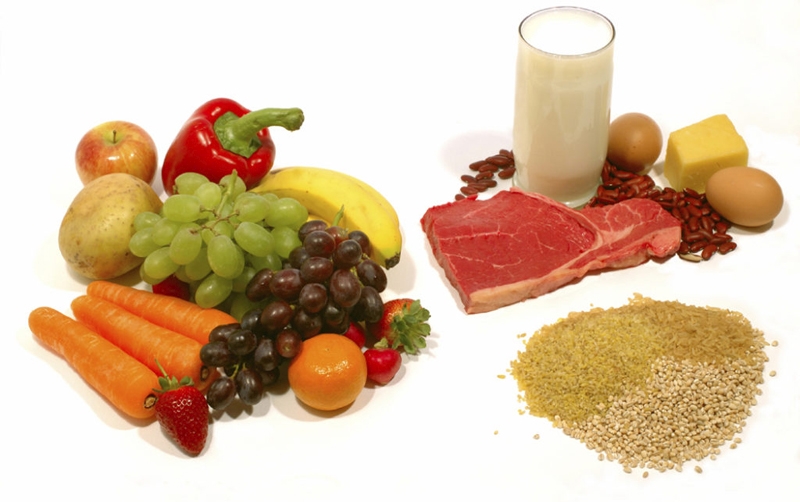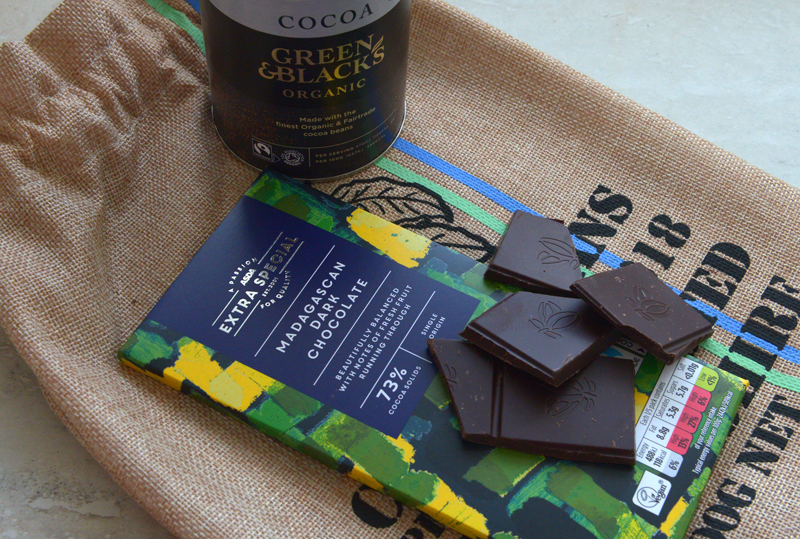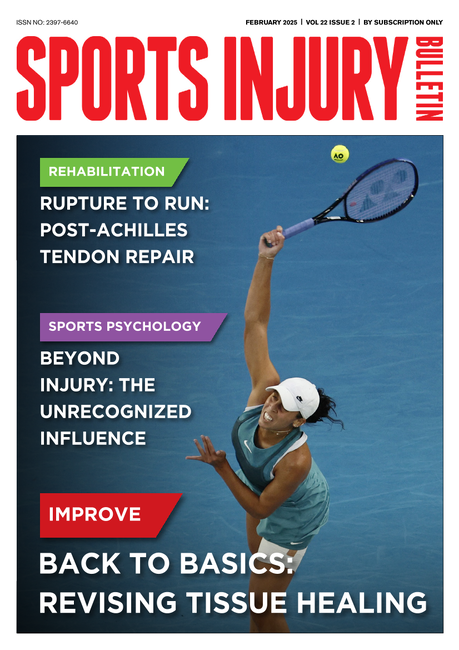Ask sportsmen and women what they think are the key issues in sports nutrition and the importance of optimizing carbohydrate intake, using protein to aid lean tissue growth, or specific ergogenic aids like creatine will probably feature in their responses. But, according to Andrew Hamilton, there’s evidence that many athletes may be neglecting the dietary basics
Punch ‘sports nutrition’ into any internet search engine and you’ll get a deluge of results from sports supplement companies and retailers, all offering products claiming to enhance sport performance. Likewise, the shelves of most sports and health food retailers are crammed to overflowing with ‘sports nutrition’ products – an Aladdin’s cave of pills, powders and potions!But while there have been great technological advances in sports nutrition products, these types of products do not automatically guarantee optimum nutrition for athletes in hard training. Indeed, a reliance on products such as carbohydrate and protein powders, fluid replacement drinks and ergogenic aids may help to foster a ‘performance from a bottle’ mentality – an assumption that today’s high-tech sports nutrition formulations can guarantee optimum performance.
However, this assumption is flawed. Relying heavily on sports nutrition products may actually lead to a poorer basic diet quality, because many athletes simply assume that they no longer need to worry about eating high quality natural foods, leading to a reduced intake of key nutrients. A poorer, low-nutrient diet is undesirable for a number of reasons, but particularly because such diets are associated with lowered immunity and a generally reduced resilience of the body to withstand the day-in, day-out rigours and cumulative stresses of training.
Supplementation is no universal panacea either. Even the most advanced nutrient supplement in the world will contain only a minute fraction of the vast number of naturally occurring beneficial substances that are continually being discovered in food – substances that may help to keep athletes healthier, thereby minimizing time lost through illness and injury.
Athletes often lack nutritional knowledge
It’s a generally accepted theory of sports nutrition that athletes don’t need to supplement nutrients because their increased energy expenditure means they eat more food to fuel activity. Provided this extra food also contains nutrients, the net result of a higher calorie intake should be a greater overall nutrient intake.For example, suppose a male sedentary office worker weighing 70kg consumes about 1,800kcals per day and the food that provides those calories supplies around the RNI of 1.4mg of vitamin B6. Now suppose he begins a training program, averaging 10km of running per day. Assuming the energy cost of running is about 1 kilocalorie per kilogram of body mass per kilometre, our newly active office worker will need to consume around 700kcals extra per day (ie 2,500kcals in total) to fuel this activity. If he continued to eat exactly the same foods, but simply increased portion sizes to meet this increased energy demand, we would expect a proportional rise in his vitamin B6 intake from 1.4 to 1.95mg per day (25/18 x 1.4mg) – more than enough to meet any increased metabolic need.
However, while this theory is broadly true, there are three implicit assumptions:
1. The basic quality of the diet is nutritionally balanced, supplying sufficient amounts of key nutrients;
2. The ‘extra’ calories consumed to fuel training are also derived from nutritious foods and not from ‘empty calories’ (eg sugary foods such as confectionary (candy), junk food and fizzy drinks);
3. An athlete has no special needs – eg female athletes undertaking high-impact sports such as running and who are now thought to have significantly higher iron requirements.
While these assumptions seem perfectly reasonable, it’s surprising how many athletes appear to lack the knowledge required to help them make healthy food choices. For example, a study carried out in the early 1990s evaluated the nutrition knowledge and dietary practices of four groups of women (1):
- 18 postmenopausal women;
- 14 college-aged dancers;
- 13 members of a college track team;
- 14 non-athletic college women.
All the subjects completed a personal information questionnaire, a 24-hour food recall, a food frequency questionnaire and a nutrition knowledge test. Although the track athletes scored significantly higher in the knowledge test than the dancers (26.5 vs 22.2), they scored less well than the postmenopausal women (28.5) and the non-athletic college women (29.7).
A much more recent study compared the nutrition knowledge and dietary composition of Italian athletes and non-athletes (2); 60 athletic and 59 non-athletic adolescent females completed 3-day food recall and nutrition knowledge questionnaires. Although the athletes reported higher carbohydrate, iron and fibre intakes and consumed lower fat, the intakes of calcium, iron, and zinc were still less than the recommended dietary allowance for these nutrients. Furthermore, while the athletes gave a slightly higher rate of correct answers on the nutrition knowledge questionnaire than non-athletes, the difference was quite small (77.6% vs 71.6%).
Another recent study examined the dietary practices, attitudes and physiological status of collegiate freshman football players in Atlanta and reported that over half the group believed that protein supplements were necessary for muscle growth and development, and that protein was the primary source of energy for muscle (3).
It’s clear from these and other studies that while the age, type of sport and cultural/social background of athletes plays an important role in determining the quality of diet, many athletes are still confused about what constitutes a healthy and nutritious diet required to support training. There’s also evidence that even when athletes are more knowledgeable about and have more positive attitudes towards, nutrition, they still fail to follow it up with improved dietary practice (4).
Evidence for sub-optimum nutrition in athletes
Do the poor nutritional knowledge and practices observed in some studies translate into sub-optimum dietary intakes in practising athletes? This is a complicated issue and the answer depends very much on which studies and which groups of athletes you look at.As you might expect, many studies on elite athletes (who often have access to specialist dietary advice and even a dedicated dietician) have not demonstrated wholesale dietary deficiencies. For example, a US study carried out on 19 elite female heptathletes (average age 26 years) combined data on body composition, dietary nutrient intake, dietary practices and biochemical indices of iron status during training (5). Apart from vitamin E, average nutrient intakes were over 67% of the recommended intake and most nutrient densities were higher than the recommended densities for women in this age group. However, there are plenty of other studies suggesting that athletes from a wide range of sporting disciplines and levels may be at risk from sub-optimum nutrient intakes as a result of either a poor understanding or inadequate execution of the basic dietary principles.
For example, a study examined the nutritional status of eight Brazilian male elite swimmers by means of a 4-day food record, a fasting blood sample and body composition measurements (6). Although the dietary assessment showed a generally adequate intake of calories, vitamins and minerals, only half the group were consuming the recommended daily intake of calcium. Moreover, carbohydrate intakes were insufficient, resulting in high levels of an enzyme called creatine-kinase – a sure sign of increased muscle degradation.
More evidence is available from other studies. A study of female judo athletes examined the nutritional status, iron-deficiency-related indices and immunity of female athletes (7). The subjects’ 3-day food records were evaluated for a range of nutrient intakes and compared to a group of controls. Although intakes of energy, protein, phosphate, vitamin B1 and niacin were higher in the judo athletes than the controls, intakes of the minerals iron and calcium still failed to meet the recommended daily allowance. In addition, levels of immunoglobulin (Ig)G (a blood protein that can be used as a marker of immunity – higher levels indicate better immunity) indicated slight immunosuppression in the athletes – those with the lowest dietary intakes of iron, B1 and niacin exhibiting the lowest (Ig)G levels.
Meanwhile, a Spanish study looked at the magnesium, zinc and copper status of 78 women involved in karate, handball, basketball and running(8). A 7-day food intake was gathered with all subjects weighing food portions to improve the accuracy of the data and the results compared with those of a control group of 65 sedentary women. The results were not encouraging; although better than the controls, no group of female athletes reached the then recommended daily intake for magnesium (280mg) or zinc (12mg), intakes that have since been revised upwards. Moreover, the handball athletes also failed to meet their daily needs for copper.
A US study on elite figure skaters used 3-day food records to look at the energy and macronutrient intakes of 80 males and 81 females taking part in a series of training camps held in Colorado between 1988 and 1995 (9). Of particular interest was what proportion of their carbohydrate intake was consumed as complex, unrefined (nutrient-rich) carbohydrate, and what proportion as refined simple carbohydrate (ie sugars). Worryingly, the skaters derived in excess of 25% of their daily energy intake from sugars (typically around 100-142g of sugars per day). The current consensus among nutritionists and health promotion agencies is that no more than 10% of calorie intake should come from refined sugars, not least because these sources of carbohydrate tend to be very low in vital nutrients.
Another study in the late 1980s at the University of Alabama studied eight highly trained female cyclists and also found their diets wanting (10). Each cyclist kept a 3-day weighed food record and diets were analysed for nutrient content, while blood tests were also carried out. The results were far from ideal; not only were the cyclists’ diets low in carbohydrate, mean daily dietary intakes were also well below the RNIs for folic acid (76% RNI), magnesium (81% RNI), iron (59% RNI), and zinc (48% RNI). In addition, more than one-third of the cyclists failed to consume even two thirds of the RNI for vitamins B6, B12, E and the minerals magnesium, iron, and zinc. The researchers noted that foods such as meats, poultry, fish, beans, peas and nuts were low or virtually absent from many of these cyclists’ diets.
These findings are pretty dismal, but surely the explosion in nutrition research and education over the past 15 years would make it unlikely that 21st century athletes could commit such basic nutritional sins? Unfortunately the evidence suggests otherwise. A 2002 US study on 23 nationally ranked female volleyballers provides more evidence that some athletes may still be struggling to fulfil even basic nutritional needs (11). Nutrient and energy intakes and energy expenditure were determined by 3-day weighed food records and activity logs, while blood tests were taken to measure nutrient status. Mean intakes for folic acid, iron, calcium, magnesium and zinc were all less than the respective RNIs for these nutrients, while 50% of the athletes were consuming less than the RNIs for the B-complex vitamins and vitamin C. To make matters worse, both carbohydrate and protein intakes were found to be inadequate for athletes of this activity level, while three athletes presented with gross iron deficiency anemia (blood haemoglobin less than 12mg/dL) and a marginal vitamin B12 and C status were found in one and four athletes, respectively.
Avoiding the pitfalls
It’s clear from these and other studies that while many athletes may be more knowledgeable about nutritional basics than their sedentary counterparts, and more motivated to translate this knowledge into action, some are still unwittingly neglecting the dietary fundamentals. This being the case, you might at this point be wondering whether your own diet is up to scratch, or whether there are certain areas that could be improved.As we’ve already hinted, building a detailed and accurate picture of nutritional status is a time-consuming process, which needs to be carried out by a suitably qualified professional. If you suspect that your diet falls short of your nutritional requirements and wish to have a proper assessment, you need to ensure that you consult someone who is appropriately skilled and qualified to carry out what is a potentially complex task. In the UK for example, this means someone who is on the British Association for Nutritional Therapy (BANT) register. A degree background in biological/biochemical/chemical sciences or nutrition/sports nutrition is also desirable.
A proper nutritional assessment should consist of at least two elements:
- A detailed food diary containing details of all foods/portion sizes consumed for at least three days and preferably longer;
- A questionnaire about general dietary habits.
In a more comprehensive assessment, this information is often supplemented by one or more biochemical tests carried out on blood, urine and maybe even sweat, but of course these add to the costs. Beware of ‘consultants’ who claim to offer wacky methods of analysis; hair tests for mineral status are of very limited value, while assessments based on blood groups, pendulums, crystal healing etc are no better than guesswork.
However, you don’t necessarily need a full nutritional assessment in order to increase the basic quality of your diet. So long as you remember that a) dietary basics are important and b) that the majority of your diet should be comprised of whole and unprocessed foods such as wholegrain breads and cereals, fresh fruits and vegetables, high quality proteins such as lean meats, fish and low-fat dairy produce, beans and lentils, and nuts and seeds, you’ll be on the right track.
References
1. J Am Diet Assoc 1992; 92(3):299-305
2. Int J Sport Nutr Exerc Metab 2002; 12(2):207-19
3. J Strength Cond Res 2001; 15(4):507-13
4. J Am Diet Assoc 1985; 85(5):573-6
5. Int J Sport Nutr Exerc Metab 2001; 11(3):299-314
6. Int J Sport Nutr Exerc Metab 2004; 14(1):81-94
7. Nutrition 2002; 18(1):86-90
8. Int J Sport Nutr 1999; 9(3):295-309
9. J Am Diet Assoc 2001; 101(3):325
10. Am Diet Assoc 1989; 89(11):1620-3
11. J Am Diet Assoc 2002; 102(9):1293-6










